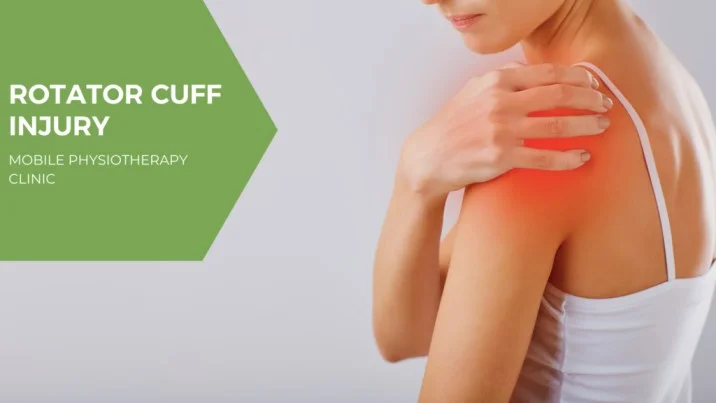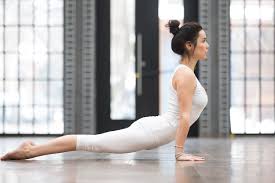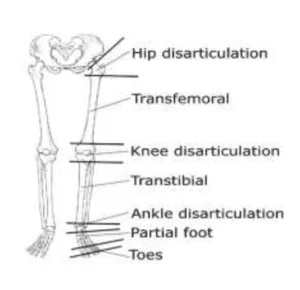Rotator Cuff Injury
The rotator cuff is consists of four muscles and tendons that hold the shoulder in place. Muscles and tendons surround the joint and keep the head of your upper arm bone firmly in the shallow socket of the shoulder. Your rotator cuff is responsible for lifting your arm and reaching upwards.
Rotator cuff injuries are widespread. Patients with rotator cuff injury describe it as a dull ache in the shoulder that increases as they move their arm away.
Although it mainly affects adults, but younger people with jobs that require repeatedly performing overhead motions are likely to get affected by the condition, too, such as painters and carpenters.
The most common rotator cuff injuries are:
- Strains
- Tendinitis
- Bursitis
A rotator cuff tear will make your shoulder weak and will make you compromise your daily activities. The Rotator cuff tears happen when tendons pull away from the arm bone.
Tears can be on either or both sides but are mostly occur on your dominant side. For example, if you have a tear in one shoulder, that will increase the chances of developing it in the other shoulder. A tear in another shoulder might not cause pain, but tests may indicate a tear.
Table of Contents
Types of rotator cuff tear
There are two types of rotator cuff tear:
Partial- In case of a partial tear, the tendon is still attached to the arm bone.
Complete- Complete tear is the complete separation of tendons from bone. It causes a hole or rips in the tendon.
Symptoms
Sometimes, the symptoms occur after months or years of rotator cuff injury. However, some rotator cuff injuries do not cause pain.
Common symptoms:
- Difficulty in achieving full range of motion
- Pain and tenderness in overhead activities
- You cannot reach behind your back
- Gradual weakness in the shoulder
- Difficulty in sleep
- Pain in the shoulder at night
- You cannot sleep on the affected shoulder
- Lost function in the arm
- Dull ache deep in the shoulder
- Difficulty in combing your hair
- Clicking sensations while moving your shoulder
- Tears that occur suddenly(usually from a fall) cause intense pain. You may feel a snapping sensation or immediate weakness in your upper arm.
You may also feel pain and arm weakness if tears in the shoulder are developed gradually. You may experience pain in the shoulder whenever you lift your arm or pain that moves down your arm. The pain may be ignorable, mild, and only present during certain activities, such as reaching into a cupboard in the starting phase.
Mild pain can be cured by over-the-counter medication, such as aspirin or ibuprofen.
As the condition progresses, the pain will not be cured by medications. You will start feeling the pain even when you are lying down. Slowly, the intensity of the pain increases and will not let you do your daily activities.
Patients with rotator cuff tears that are not painful can still feel weakness in the arm and other symptoms.
Causes
Any accident that resulted in a broken collarbone or dislocated shoulder can cause rotator cuff injury.
Usually, Rotator cuff tears occur over time as tendons tire out with age and overuse. Therefore, people of age 40 or above are at more risk.
Causes for gradual rotator cuff tear(degenerative tear):
Bone spurs- There are smooth bony growths that develop on top of the shoulder bone. Whenever you lift your arm, these bone spurs rub against tendons, which leads to shoulder impingement after it causes the space where the rotator cuff is present to be even more narrowed and creates friction between bone and tendon. As a result of it, a partial or complete tear may occur.
Overuse- Repeated overhead shoulder movements can cause rotator cuff injury. Some sports or jobs need you to repeatedly lift your arms, such as tennis, badminton, painting, and carpeting. Overusing your arm can cause a tear.
Decreased blood flow- As you get older, blood flow to the tendons and muscles decreases. Now, your rotator cuff needs healthy blood to function correctly, and in the absence of it, it can tear.
What are the causes of common rotator cuff injuries?
Rotator cuff injuries can be classified by their cause.
Tendinitis- Tendinitis is caused by overuse of the rotator cuff. It can lead the rotator cuff to become inflamed.
Bursitis is the common rotator cuff injury caused by inflammation of the bursa (fluid-filled sacs between the rotator cuff tendons and the beneath bone).
Strains- The rotator cuff can strain after a sudden injury, an accident, a fall. Those injuries generally cause intense and immediate pain. The tendons connecting muscles to the bones can overstretch(strain).
Risk factors for rotator cuff injury
Some factors can increase your risk of developing the condition:
- Family history: Someone in your family having the rotator cuff injury increases your chances of getting it.
- Age: Age is the most significant factor in developing rotator cuff injury. If you are 40 or above, you are at most risk of developing the condition.
- Excessive Lifting: If your work needs you to move your arm repeatedly, you may develop the condition. Athletes or people who need to do overhead activities are at risk.
- Bad posture: Your lousy posture can be a contributing factor in developing the rotator cuff tear.
- Smoking: It is a surprising factor, but yes, smoking and rotator cuff injury have a relation.
The degenerative tear is more common in people who do the same repetitive arm movements, which are:
- Carpenters
- Painters
- Mechanics
- Athletes who play sports like baseball, softball, tennis.
- Athletes who are a part of a rowing crew.
Diagnosis
Your doctor will ask your medical history, conduct a physical exam, and order imaging tests to diagnose the rotator cuff injury.
They may ask about your daily physical activities to check if you can have a degenerative tear.
Your doctor will ask you to move your arm to check the range of motion and strength in the arm.
If, after getting your medical history and taking your physical examination, your doctor has a suspicion of rotator cuff injury, they will order some imaging tests.
X-ray: X-ray can show bone spurs developed on the shoulder bone.
Magnetic Resonance Imaging(MRI): MRI can provide better and detailed results than X-ray. MRI examines soft tissues, muscles, and tendons. They not only help in identifying tears, but they can also show how large and severe tears have become.
Preventing Rotator cuff injury
If someone in your family has a rotator cuff injury or you have had it once, then you should take some measures to prevent it.
Daily shoulder strengthening exercises can help in preventing the injury. You can start doing some light exercises at home or also consult a physical therapist. People focus more on the front muscles of the chest, shoulder, and upper arm, but strengthening the back muscles of the shoulder is essential too. In addition, strengthen the muscles around the shoulder blade to optimize shoulder muscle balance. Your doctor or a physical therapist can help you plan and exercise routine.
Work on your posture. A good posture may help you prevent the condition.
You can start regular checkups so that that rotator cuff injury can be detected earlier.
If you are an athlete or a person with an occupation that requires using the shoulder repetitively. In that case, you should take frequent rest breaks. This can reduce the load on the shoulder.
Treatment
If you are at the very initial stage of the injury, taking an ample amount of rest can cure it. But for mild to severe conditions, non-surgical and surgical treatments are required.
Ice: Grab some ice wrap it in a cloth and put it on the affected area. Repeat this process to get fast results.
Massage therapy: Massage therapy can give you immediate relief from the pain. Regular massage therapy can reduce the pain to some extent.
Physical therapy: After getting diagnosed with a rotator cuff injury, you can consult a physical therapist about physical therapy. Your physical therapist will introduce you to some of the strengthening exercises that can relieve the pain. After participating in the sessions regularly, if you show improvement, your therapist will introduce you to some of the advanced-level exercises. If your symptoms are severe, you should not do exercises without expert supervision.
Injections: If conservative treatments are not working, your doctor may prescribe steroid injections. Mostly, steroid injections are recommended if the pain is so intense that it is not letting you sleep, focus on your daily activities, or participate in physical therapies. Injections are temporary, and they come with some side effects, such as they can weakening the tendon over time, and may decrease the success rate of the surgery if it is needed.
Surgery: There are different surgeries available for the rotator cuff injury.
Arthroscopic tendon repair: This is the procedure in which surgeons insert a very tiny camera(arthroscope) and some tools through small incisions. Surgeons refer to the images from the arthroscope and perform the procedure.
Open tendon repair: If your rotator cuff tear is larger, then your surgeon may feel that An open tendon repair is the better option. In such types of surgeries, your surgeon works through a larger incision to reattach the damaged tendon to the bone.
Tendon transfer: Surgeons may use a nearby tendon if the torn arm’s tendon is too damaged.
Shoulder replacement: If the tendon is too damaged and a nearby tendon cannot be used too, then shoulder replacement is the last option. Most of the patients need a shoulder replacement. Reverse shoulder arthroplasty is an innovative procedure to improve the artificial joint’s stability, installs the ball part of the artificial joint onto the shoulder blade and the socket part onto the arm bone.
If the condition has become severe, rotator cuff injury can make your life miserable. In case of a complete tear, you will not be able to move your arm. It is not normal to live with pain and start restricting your activities to avoid it. Do not ignore the symptoms. Consult a doctor today.







One Comment